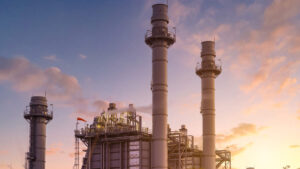Low oil prices put the squeeze on offshore supply chain players

Picture: Getty
Low oil prices continue to limit the amount of offshore oil and gas activity, which has placed pressure on the offshore supply chain sector.
While the sector started 2019 on the back of strong contract awards for subsea kit and FPSO hulls as well as improved floating rig rates, uneasiness has been building around its financial health.
The pressure has already claimed a couple of victims with Norwegian rig operator Dolphin Drilling filing for bankruptcy in June last year, while offshore engineering and construction giant McDermott followed suit just this week.
Dolphin is believed to have fallen foul of the oil price collapse between 2014 and 2016 along with competition from newcomers. McDermott is restructuring due to depressed conditions in the offshore drilling industry and setbacks in major energy projects.
Wood Mackenzie upstream supply chain research analyst Hoang Lu said the sector faced razor thin margins and cost pressures.
“Meanwhile, the energy transition and threat of oversupply compete for attention. Ultimately, the offshore supply chain may take on a whole new look through 2020,” he said.

There is unlikely to be any short-term relief with the global resources consultancy forecasting that China’s agreement to increase its energy imports from the US under their phase one trade deal would not have much impact on oil prices, as they are already discounted to reflect the cost of transport to other Asian nations
In the longer term, Woodmac also believes that oil demand will peak in 2036 and that the transition towards renewable energy would continue to accelerate towards that point.
“Offshore supply chain players that can capitalise on the growing momentum now will have a significant competitive advantage in 2020. No one can afford to stand idle as customer and investor activism drives this change,” Lu said.
He noted that the use of hybrid batteries have been a conduit of transformation, highlighting Transocean’s use of a first-of-its-kind hybrid energy storage system on its Spitsbergen semisubmersible in the North Sea.
“The technology reduces fuel consumption, leading to lower emissions,” he explained.
“Seadrill has made similar strides with the West Mira, another hybrid-powered floating rig employing a similar battery energy storage system. We expect any orders of new-builds will require a renewable element, like Awilco’s two green new-builds currently on order.”
Wood Mackenzie also noted that environmental, social and governance criteria were becoming increasingly important, and, as a result, were shaping offshore supply chain brands.
Support for this stance comes from a recent global study by independent financial services advisory deVere Group, which found that some 77 per cent of millennials – people who were born between the early 1980s and early 2000s – cite Environmental, Social and Governance (ESG) investing as their top priority when considering investment opportunities.
READ: Millennials rate responsible investing more highly than anticipated returns
As example of this movement, TechnipFMC’s engineering and construction spin-off will be known as Technip Energies to highlight its ambition to be a global energy transition player.
“A lower margin supply chain is a reality for the near term,” Lu said.
“Contractors will likely seek ways to broaden their scope of services to balance portfolios with the growth of renewables.
“Offshore wind projects are increasing in complexity, with larger developments being installed ever further offshore. This presents new opportunities for the supply chain. The next phase of offshore will ultimately be highly competitive; adapting early is vital.”
NOW READ: Has the time come for offshore wind power to take its place in Australia?
UNLOCK INSIGHTS
Discover the untold stories of emerging ASX stocks.
Daily news and expert analysis, it's free to subscribe.
By proceeding, you confirm you understand that we handle personal information in accordance with our Privacy Policy.








